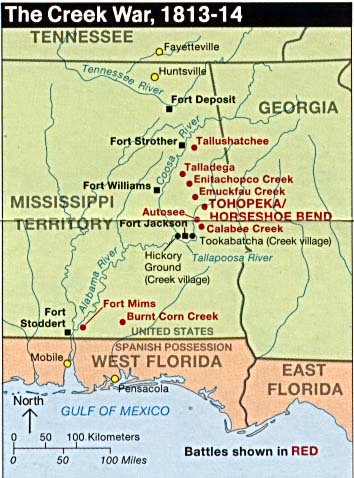|
John Ross (Cherokee Chief)
John Ross ( chr, ᎫᏫᏍᎫᏫ, translit=guwisguwi) (October 3, 1790 – August 1, 1866), (meaning in Cherokee: "Mysterious Little White Bird"), was the Principal Chief of the Cherokee Nation from 1828 to 1866; he served longer in that position than any other person. Described as the Moses of his people, Ross influenced the nation through such tumultuous events as the relocation to Indian Territory and the American Civil War. Ross was the son of a Cherokee mother and a Scottish father. His mother and maternal grandmother were each of mixed Scots-Cherokee ancestry but brought up in Cherokee culture, which is matrilineal. His maternal grandfather was a Scottish immigrant. At the time among the matrilineal Cherokee, children born to a Cherokee mother were considered part of her family and clan; they gained their social status from their mother. The Cherokee absorbed mixed-race descendants born to its women. As a result, young John was raised to identify as Cherokee, while also le ... [...More Info...] [...Related Items...] OR: [Wikipedia] [Google] [Baidu] |
Cherokee Nation (1794–1907)
The Cherokee Nation (Cherokee: ᏣᎳᎩᎯ ᎠᏰᎵ, pronounced ''Tsalagihi Ayeli'') was a legal, autonomous, tribal government in North America recognized from 1794 to 1907. It was often referred to simply as "The Nation" by its inhabitants. The government was effectively disbanded in 1907, after its land rights had been extinguished, prior to the admission of Oklahoma as a state. During the late 20th century, the Cherokee people reorganized, instituting a government with sovereign jurisdiction known as the Cherokee Nation. On July 9, 2020, the United States Supreme Court ruled that the Muscogee (Creek) Nation (and by extension the Cherokee Nation) had never been disestablished in the years before allotment and Oklahoma Statehood. The Cherokee Nation consisted of the Cherokee (ᏣᎳᎩ —pronounced ''Tsalagi'' or ''Cha-la-gee'') people of the Qualla Boundary and the southeastern United States; those who relocated voluntarily from the southeastern United States to th ... [...More Info...] [...Related Items...] OR: [Wikipedia] [Google] [Baidu] |
Matrilineal
Matrilineality is the tracing of kinship through the female line. It may also correlate with a social system in which each person is identified with their matriline – their mother's lineage – and which can involve the inheritance of property and/or titles. A matriline is a line of descent from a female ancestor to a descendant (of either sex) in which the individuals in all intervening generations are mothersin other words, a "mother line". In a matrilineal descent system, an individual is considered to belong to the same descent group as their mother. This ancient matrilineal descent pattern is in contrast to the currently more popular pattern of patrilineal descent from which a family name is usually derived. The ''matriline'' of historical nobility was also called their enatic or uterine ancestry, corresponding to the patrilineal or "agnatic" ancestry. Early human kinship In the late 19th century, almost all prehistorians and anthropologists believed, fo ... [...More Info...] [...Related Items...] OR: [Wikipedia] [Google] [Baidu] |
Stand Watie
Brigadier-General Stand Watie ( chr, ᏕᎦᏔᎦ, translit=Degataga, lit=Stand firm; December 12, 1806September 9, 1871), also known as Standhope Uwatie, Tawkertawker, and Isaac S. Watie, was a Cherokee politician who served as the second principal chief of the Cherokee Nation from 1862 to 1866. The Cherokee Nation allied with the Confederate States during the American Civil War and he was the only Native American Confederate general officer of the war. Watie commanded Indian forces in the Trans-Mississippi Theater, made up mostly of Cherokee, Muskogee, and Seminole. He was the last Confederate States Army general to surrender. Before removal of the Cherokee to Indian Territory in the late 1830s, Watie and his older brother Elias Boudinot were among Cherokee leaders who signed the Treaty of New Echota in 1835. The majority of the tribe opposed their action. In 1839, the brothers were attacked in an assassination attempt, as were other relatives active in the Treaty Part ... [...More Info...] [...Related Items...] OR: [Wikipedia] [Google] [Baidu] |
Eastern Band Of Cherokee Indians
The Eastern Band of Cherokee Indians (EBCI), (Cherokee: ᏣᎳᎩᏱ ᏕᏣᏓᏂᎸᎩ, ''Tsalagiyi Detsadanilvgi'') is a federally recognized Indian Tribe based in Western North Carolina in the United States. They are descended from the small group of 800–1000 Cherokee who remained in the Eastern United States after the US military, under the Indian Removal Act, moved the other 15,000 Cherokee to west of the Mississippi River in the late 1830s, to Indian Territory. Those Cherokee remaining in the East were to give up tribal Cherokee citizenship and to assimilate. They became US citizens. The history of the Eastern Band closely follows that of the Qualla Boundary, a land trust made up of an area of their original territory. When they reorganized as a tribe, they had to buy back the land from the US government. The EBCI also own, hold, or maintain additional lands in the vicinity, and as far away as from the Qualla Boundary. The Eastern Band of Cherokee Indians are primarily ... [...More Info...] [...Related Items...] OR: [Wikipedia] [Google] [Baidu] |
Major Ridge
Major Ridge, The Ridge (and sometimes Pathkiller II) (c. 1771 – 22 June 1839) (also known as ''Nunnehidihi'', and later ''Ganundalegi'') was a Cherokee leader, a member of the tribal council, and a lawmaker. As a warrior, he fought in the Cherokee–American wars against American frontiersmen. Later, Major Ridge led the Cherokee in alliances with General Andrew Jackson and the United States in the Creek and Seminole wars of the early 19th century. Along with Charles R. Hicks and James Vann, Ridge was part of the "Cherokee triumvirate," a group of rising younger chiefs in the early nineteenth-century Cherokee Nation who supported acculturation and other changes in how the people dealt with the United States. All identified as Cherokee; they were of mixed race and had some exposure to European-American culture. Ridge became a wealthy planter, slave owner, and ferryman in Georgia. Under increasing pressure for removal from the federal government, Ridge and others of the Tre ... [...More Info...] [...Related Items...] OR: [Wikipedia] [Google] [Baidu] |
Charles R
Charles is a masculine given name predominantly found in English and French speaking countries. It is from the French form ''Charles'' of the Proto-Germanic name (in runic alphabet) or ''*karilaz'' (in Latin alphabet), whose meaning was "free man". The Old English descendant of this word was '' Ċearl'' or ''Ċeorl'', as the name of King Cearl of Mercia, that disappeared after the Norman conquest of England. The name was notably borne by Charlemagne (Charles the Great), and was at the time Latinized as ''Karolus'' (as in ''Vita Karoli Magni''), later also as '' Carolus''. Some Germanic languages, for example Dutch and German, have retained the word in two separate senses. In the particular case of Dutch, ''Karel'' refers to the given name, whereas the noun ''kerel'' means "a bloke, fellow, man". Etymology The name's etymology is a Common Germanic noun ''*karilaz'' meaning "free man", which survives in English as churl (< Old English ''ċeorl''), which developed i ... [...More Info...] [...Related Items...] OR: [Wikipedia] [Google] [Baidu] |
Pathkiller
Pathkiller, (died January 8, 1827) was a Cherokee warrior and Principal Chief of the Cherokee Nation. Warrior life PathkillerPathkiller is a Cherokee rank or title—not a name. His original name is unknown. fought against the Overmountain Men and American Wataugan frontiersmen settled in the Washington District at the outbreak of the American Revolutionary War. Afterward, he joined with Dragging Canoe and the Chickamauga Cherokee faction fighting in the Cherokee–American wars, until the conclusion of hostilities in 1794. This Pathkiller may be the one who served as a colonel with the Tennessee militia and fought for Morgan's "Regiment of Cherokees" commanded by Colonel Gideon Morgan under Andrew Jackson, against the Red Stick Indian uprising during the Creek War (October 7, 1813 – April 11, 1814), a frontier extension of the War of 1812. Cherokee national leader Pathkiller was the last hereditary chief of the Cherokee. He was the Principal Chief of the Cherokee Nation ( ... [...More Info...] [...Related Items...] OR: [Wikipedia] [Google] [Baidu] |
Chattanooga, Tennessee
Chattanooga ( ) is a city in and the county seat of Hamilton County, Tennessee, United States. Located along the Tennessee River bordering Georgia (U.S. state), Georgia, it also extends into Marion County, Tennessee, Marion County on its western end. With a population of 181,099 in 2020, it is Tennessee's fourth-largest city and one of the two principal cities of East Tennessee, along with Knoxville, Tennessee, Knoxville. It anchors the Chattanooga metropolitan area, Tennessee's fourth-largest metropolitan statistical area, as well as a larger three-state area that includes Southeast Tennessee, Northwest Georgia, and Northeast Alabama. Chattanooga was a crucial city during the American Civil War, due to the multiple railroads that converge there. After the war, the railroads allowed for the city to grow into one of the Southeastern United States' largest heavy industrial hubs. Today, major industry that drives the economy includes automotive, advanced manufacturing, food and ... [...More Info...] [...Related Items...] OR: [Wikipedia] [Google] [Baidu] |
Chattanooga Creek
Chattanooga Creek is a stream in Walker County, Georgia and Hamilton County, Tennessee. Chattanooga is a Muskogean-language name meaning "rock coming to a point". At the USGS The United States Geological Survey (USGS), formerly simply known as the Geological Survey, is a scientific agency of the United States government. The scientists of the USGS study the landscape of the United States, its natural resources, ... station at Flintstone, Georgia, Chattanooga Creek has a discharge of 105 cubic feet per second. See also * List of rivers of Georgia (U.S. state) * List of rivers of Tennessee References Rivers of Walker County, Georgia Rivers of Hamilton County, Tennessee Rivers of Georgia (U.S. state) Rivers of Tennessee {{Tennessee-river-stub ... [...More Info...] [...Related Items...] OR: [Wikipedia] [Google] [Baidu] |
Tennessee River
The Tennessee River is the largest tributary of the Ohio River. It is approximately long and is located in the southeastern United States in the Tennessee Valley. The river was once popularly known as the Cherokee River, among other names, as the Cherokee people had their homelands along its banks, especially in what are now East Tennessee and northern Alabama. Additionally, its tributary, the Little Tennessee River, flows into it from Western North Carolina and northeastern Georgia, where the river also was bordered by numerous Cherokee towns. Its current name is derived from the Cherokee town, '' Tanasi'', which was located on the Tennessee side of the Appalachian Mountains. Course The Tennessee River is formed at the confluence of the Holston and French Broad rivers in present-day Knoxville, Tennessee. From Knoxville, it flows southwest through East Tennessee into Chattanooga before crossing into Alabama. It travels through the Huntsville and Decatur area before re ... [...More Info...] [...Related Items...] OR: [Wikipedia] [Google] [Baidu] |
Tennessee
Tennessee ( , ), officially the State of Tennessee, is a landlocked state in the Southeastern region of the United States. Tennessee is the 36th-largest by area and the 15th-most populous of the 50 states. It is bordered by Kentucky to the north, Virginia to the northeast, North Carolina to the east, Georgia, Alabama, and Mississippi to the south, Arkansas to the southwest, and Missouri to the northwest. Tennessee is geographically, culturally, and legally divided into three Grand Divisions of East, Middle, and West Tennessee. Nashville is the state's capital and largest city, and anchors its largest metropolitan area. Other major cities include Memphis, Knoxville, Chattanooga, and Clarksville. Tennessee's population as of the 2020 United States census is approximately 6.9 million. Tennessee is rooted in the Watauga Association, a 1772 frontier pact generally regarded as the first constitutional government west of the Appalachian Mountains. Its name derives fr ... [...More Info...] [...Related Items...] OR: [Wikipedia] [Google] [Baidu] |
Red Stick War
The Creek War (1813–1814), also known as the Red Stick War and the Creek Civil War, was a regional war between opposing Indigenous American Creek factions, European empires and the United States, taking place largely in modern-day Alabama and along the Gulf Coast. The major conflicts of the war took place between state militia units and the "Red Stick" Creeks. The United States government formed an alliance with the Choctaw Nation and Cherokee Nation (the traditional enemies of the Creeks), along with the remaining Creeks to put the rebellion down. According to historian John K. Mahon, the Creek War "was as much a civil war among Creeks as between red and white, and it pointed up the separation of Creeks and Seminoles". The war was also part of the centuries-long American Indian Wars. It is usually considered part of the War of 1812 because it was influenced by Tecumseh's War in the Old Northwest, was concurrent with the American-British portion of the war and involved ma ... [...More Info...] [...Related Items...] OR: [Wikipedia] [Google] [Baidu] |





